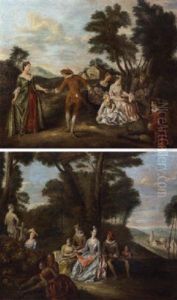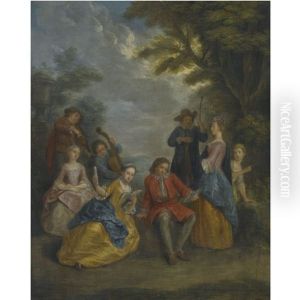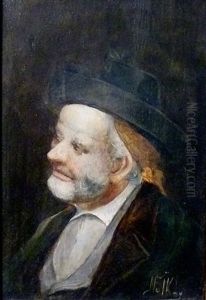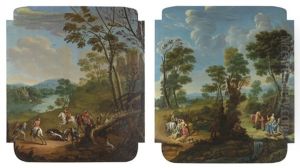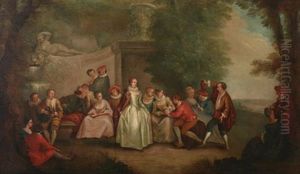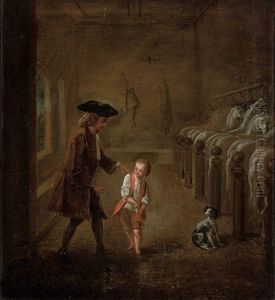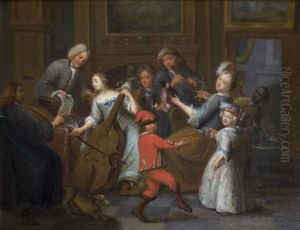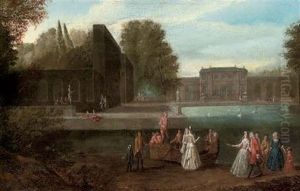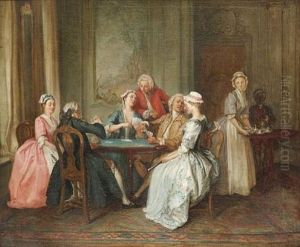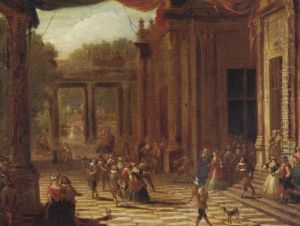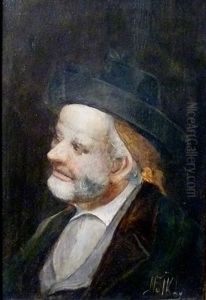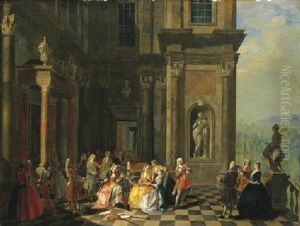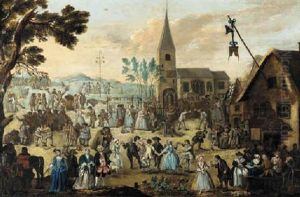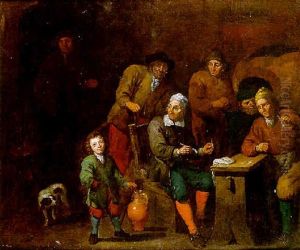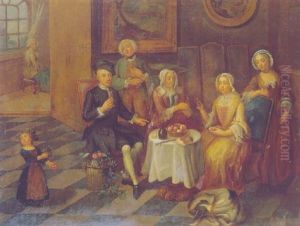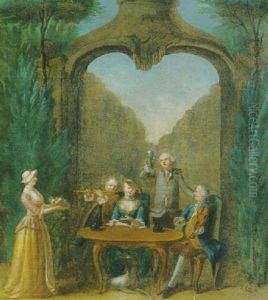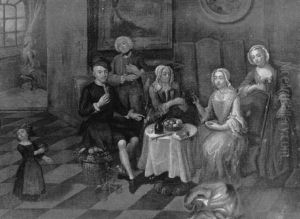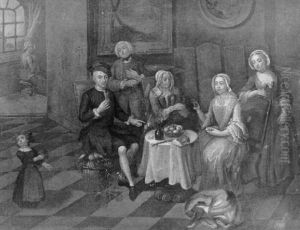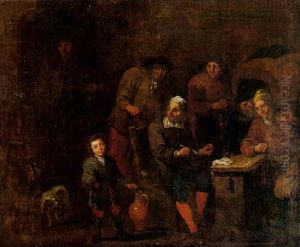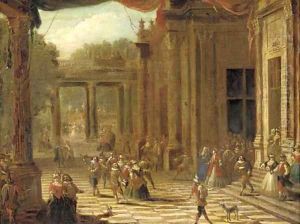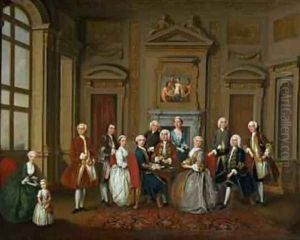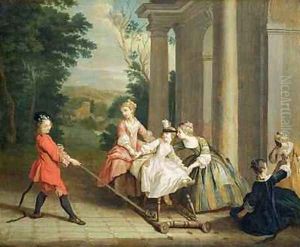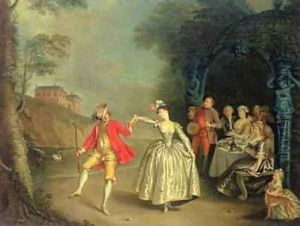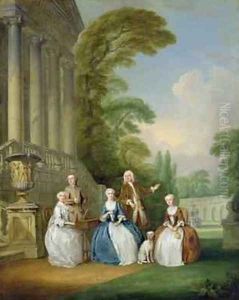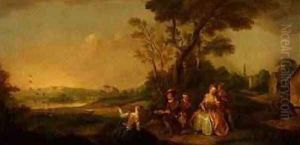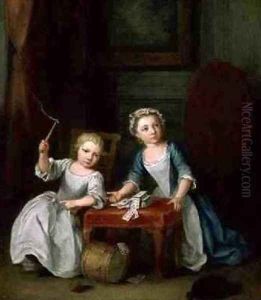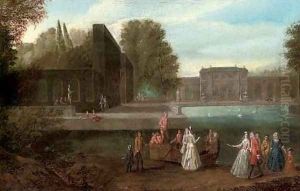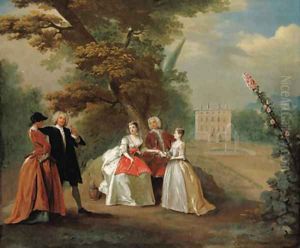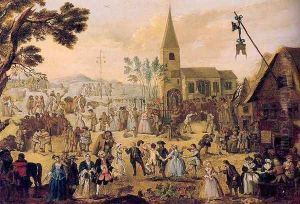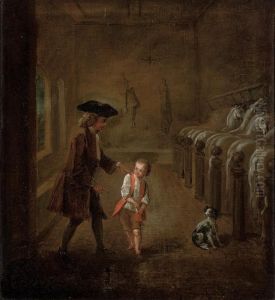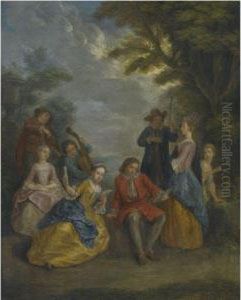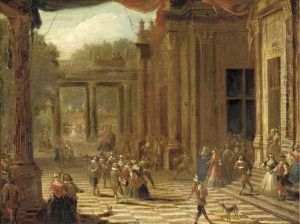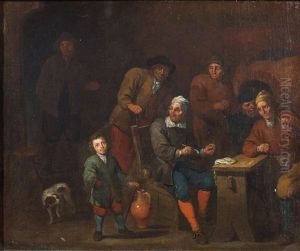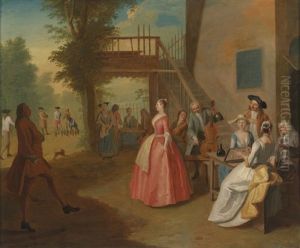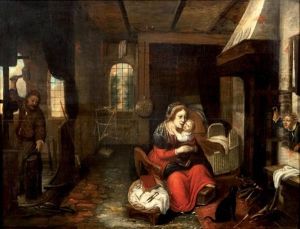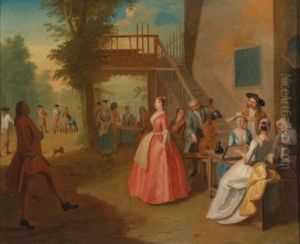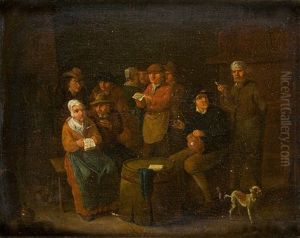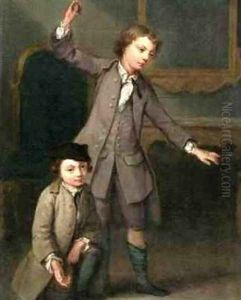Joseph Francis Nollekens Paintings
Joseph Francis Nollekens R.A. was an eminent British sculptor of the 18th century, renowned for his neoclassical marble sculptures, portrait busts, and monuments. Born in London to a Flemish painter, he was exposed to the world of art from a young age. Nollekens initially trained under his father before studying sculpture under Peter Scheemakers. His early career was significantly shaped by his time in Rome (1760-1770), where he became deeply influenced by ancient Roman sculpture and the works of contemporary Italian artists. This period was crucial for the development of his style, characterized by its adherence to classical ideals and a meticulous attention to detail.
During his stay in Rome, Nollekens made copies of ancient statues, but his reputation began to flourish due to his original works and restorations of Roman sculptures. His talents were recognized by wealthy British patrons on the Grand Tour, who commissioned works from him, ensuring his financial success and professional reputation upon his return to Britain.
In 1771, Nollekens settled back in London, where he quickly became the most sought-after sculptor for portrait busts among the British elite, including King George III. His works from this period reflect a remarkable ability to capture both the physical likeness and the personality of his subjects. Besides portraits, he was also celebrated for his mythological subjects and funerary monuments, which can be found in many British churches and cathedrals.
Nollekens was a founding member of the Royal Academy of Arts in 1768 and served as a prolific exhibitor, contributing to the Academy's exhibitions throughout his career. Despite his professional success, his personal life and character were often subjects of criticism. He was known to be exceedingly frugal, a trait that, coupled with his substantial earnings, led to considerable wealth.
Upon his death in 1823, Nollekens left behind a legacy as one of Britain's foremost neoclassical sculptors. His works continue to be admired for their technical mastery and expressive realism. However, his reputation also endures through the vivid portrayal in J.T. Smith's memoir, 'Nollekens and His Times' (1828), which offers a detailed, albeit not always flattering, view of his life and the art circles of his time.
